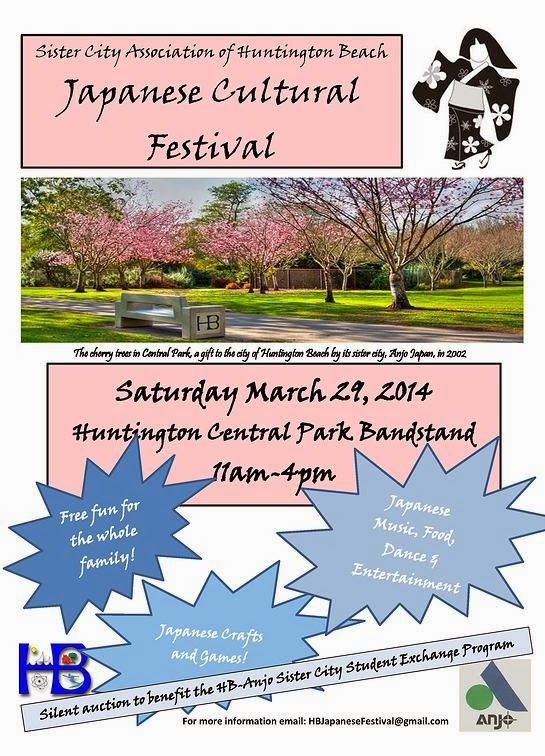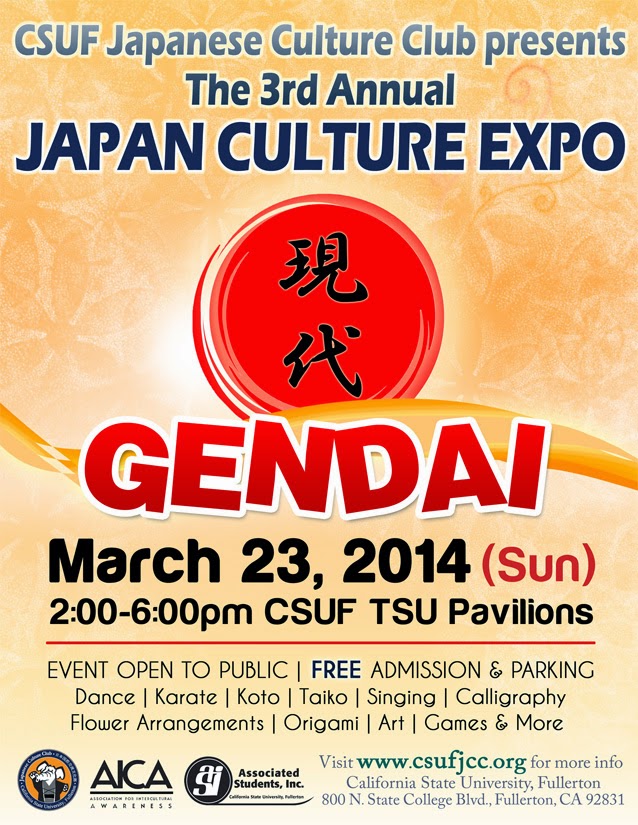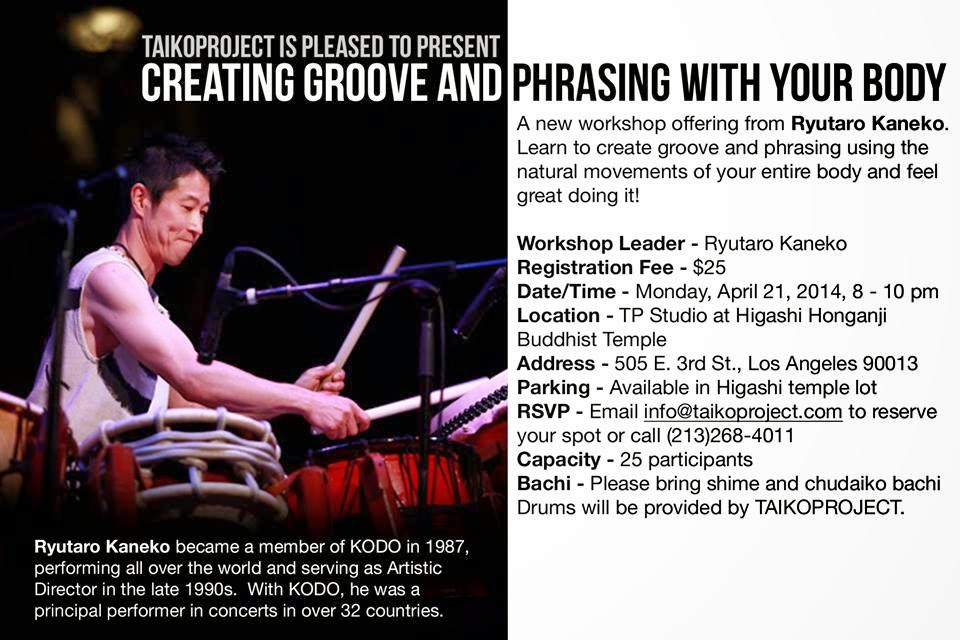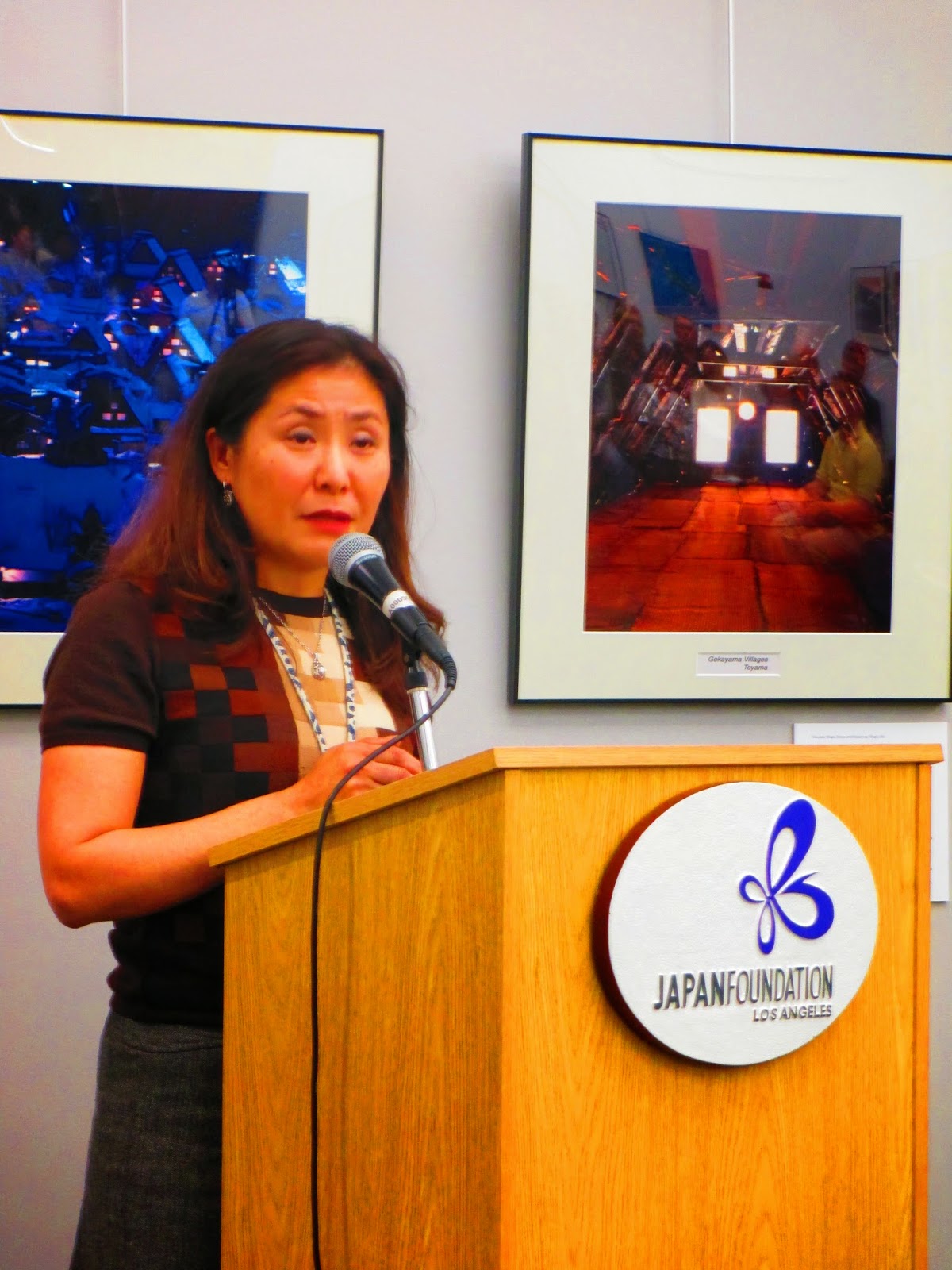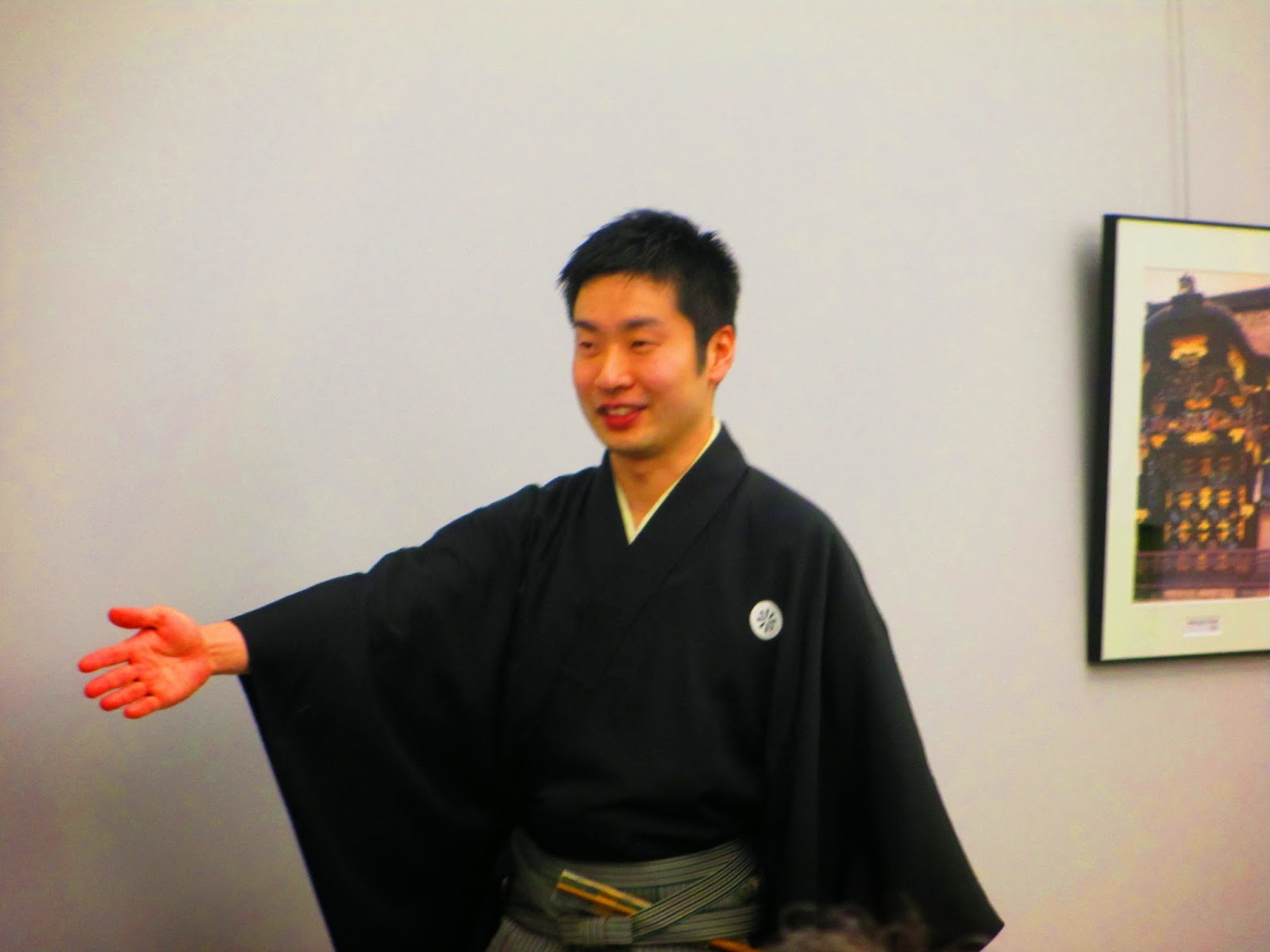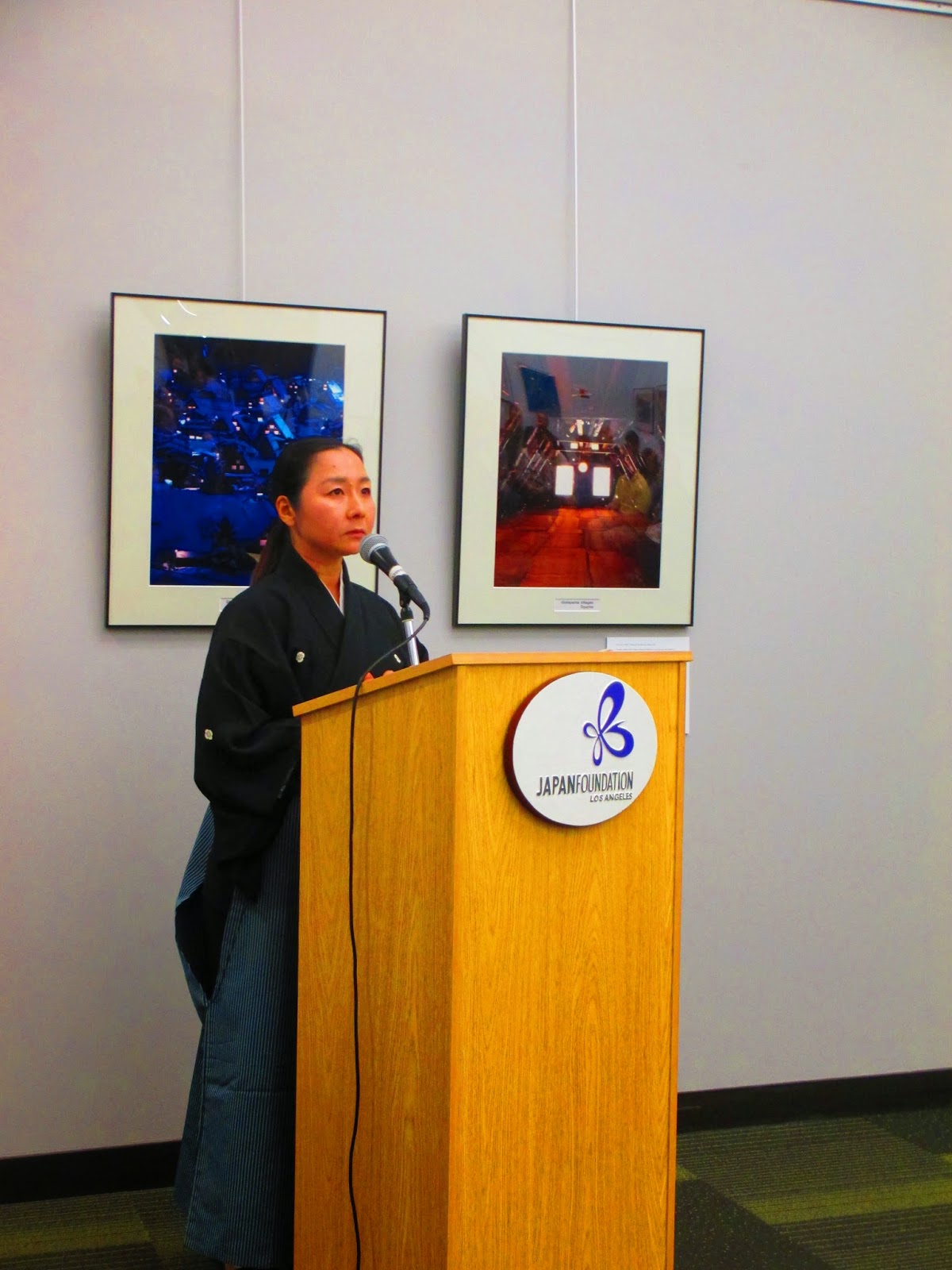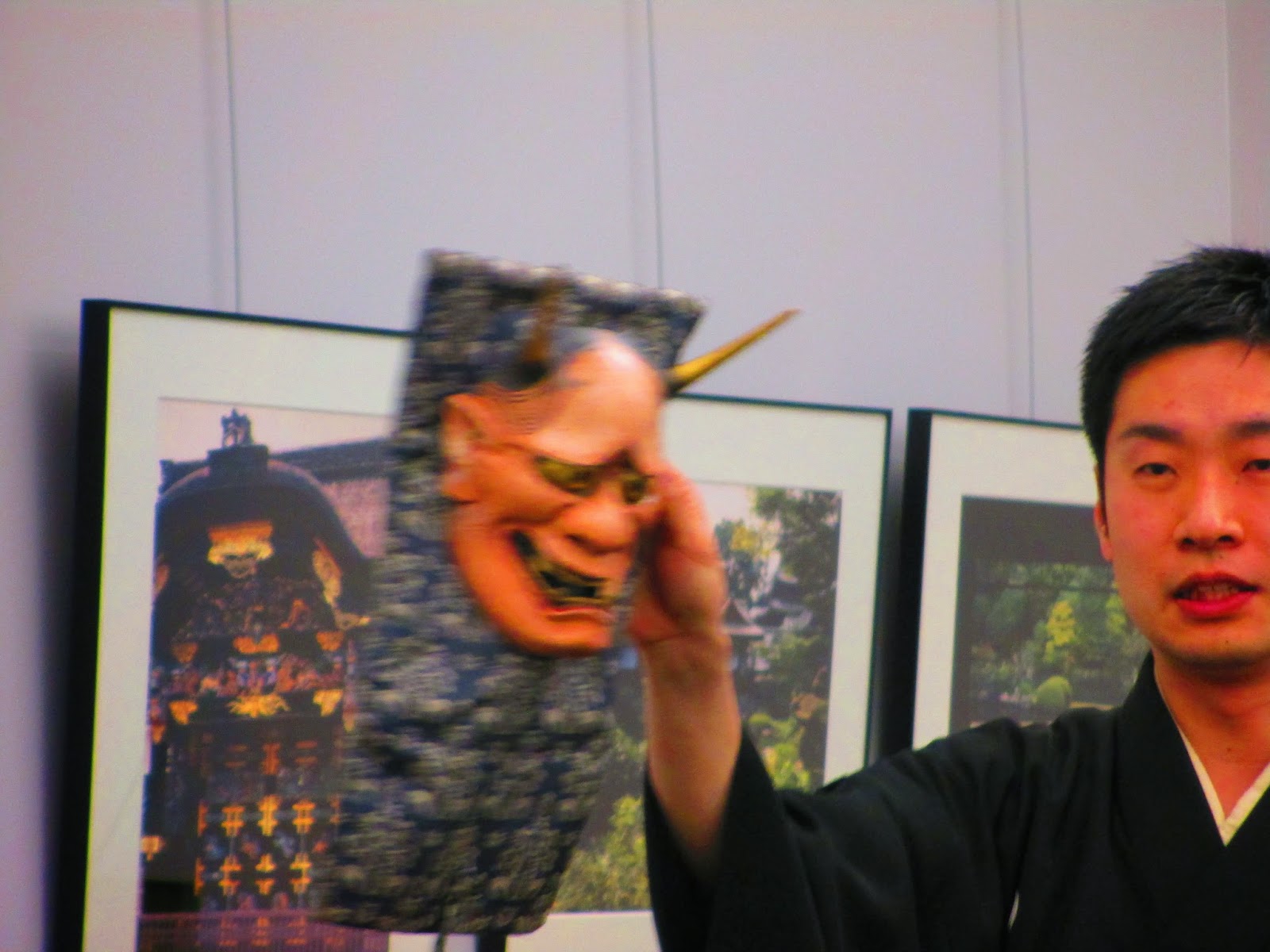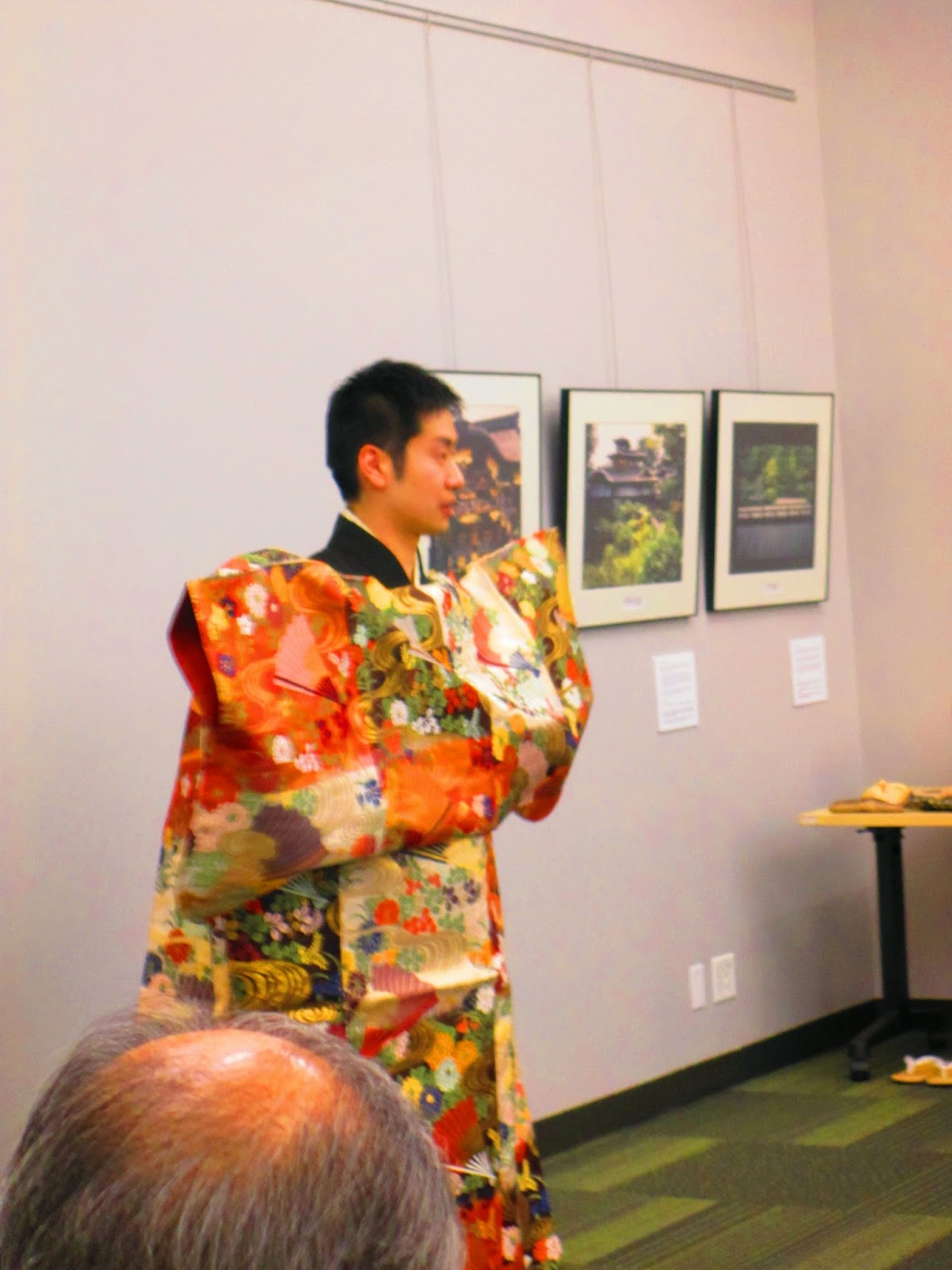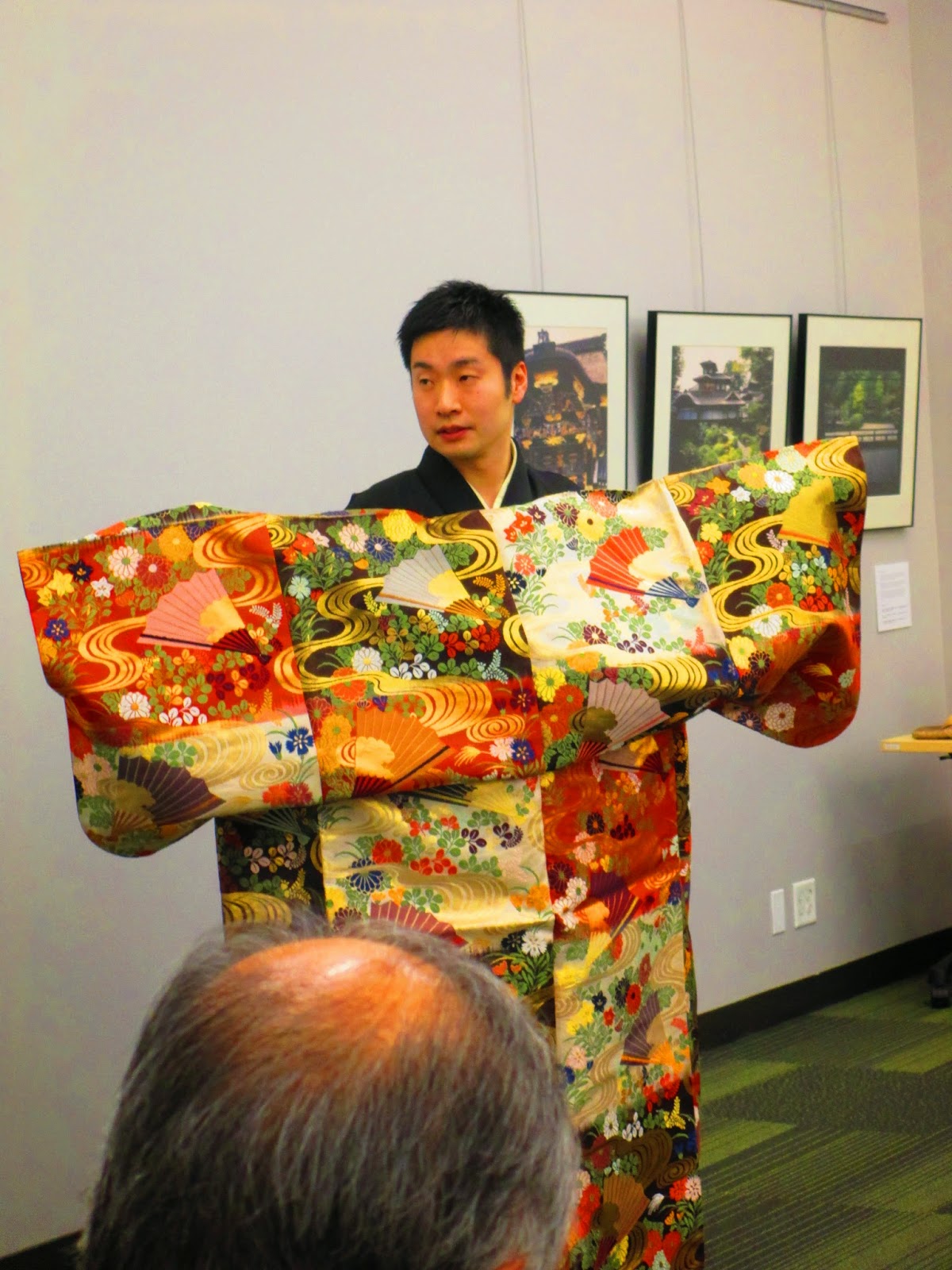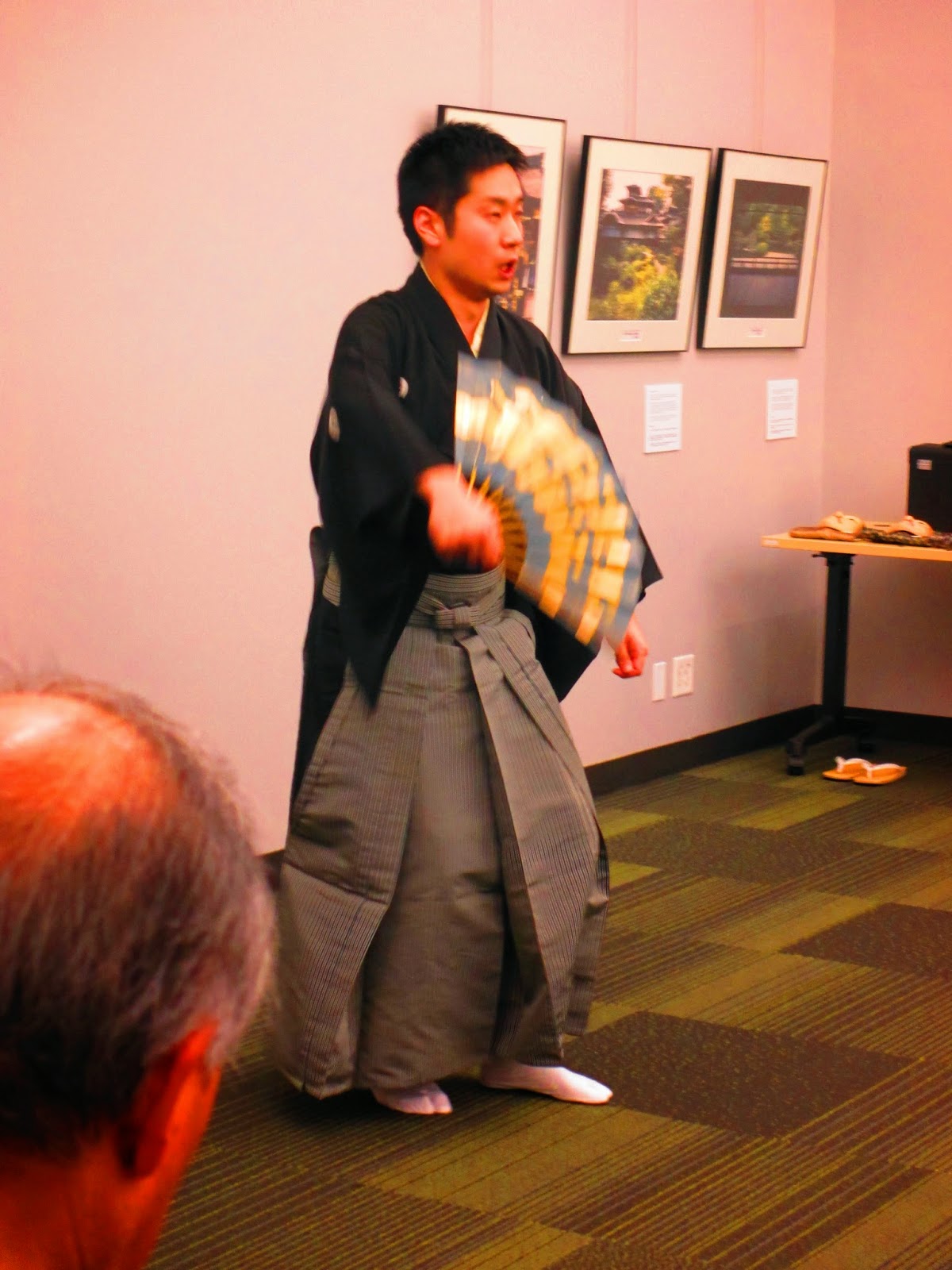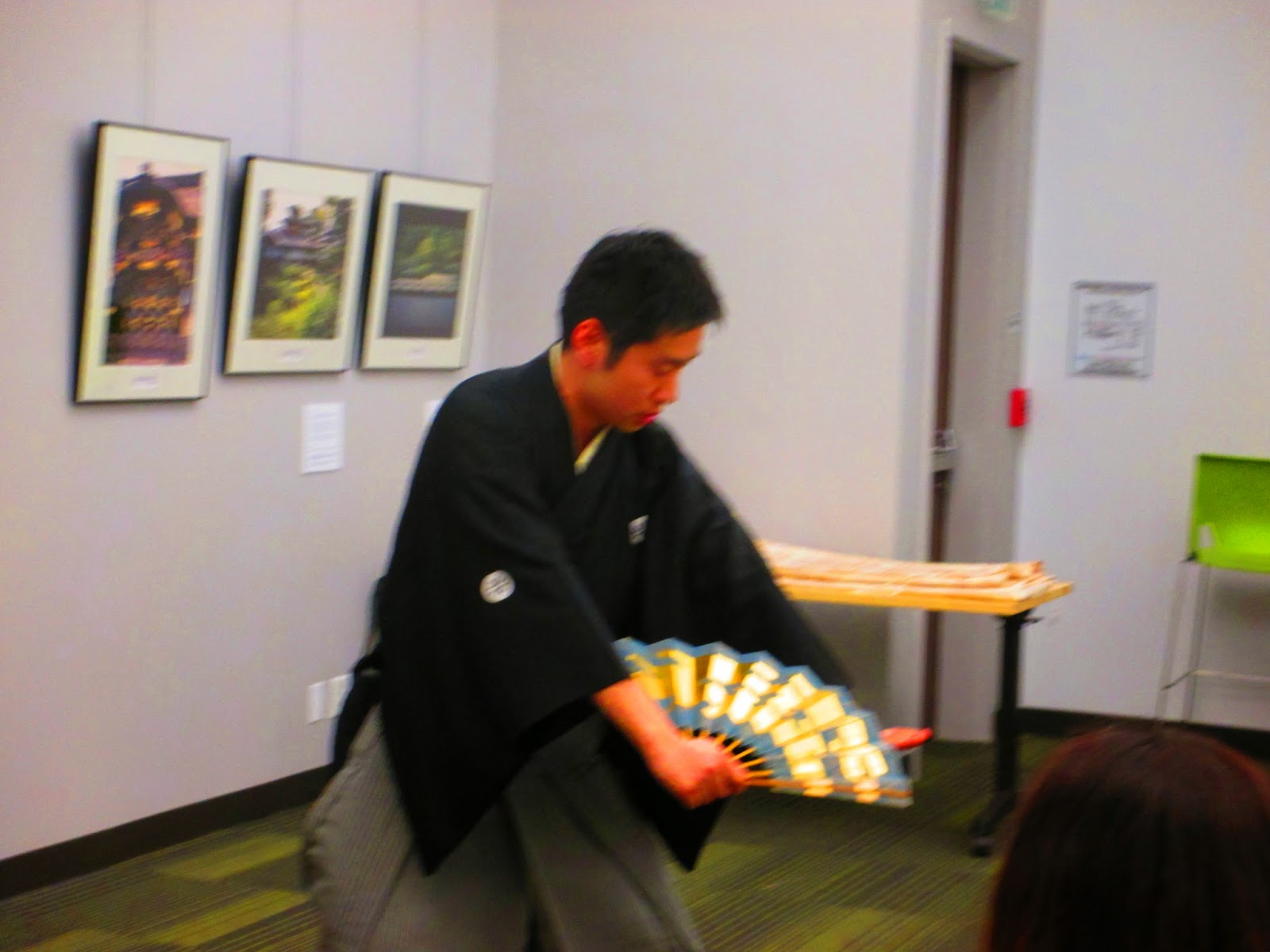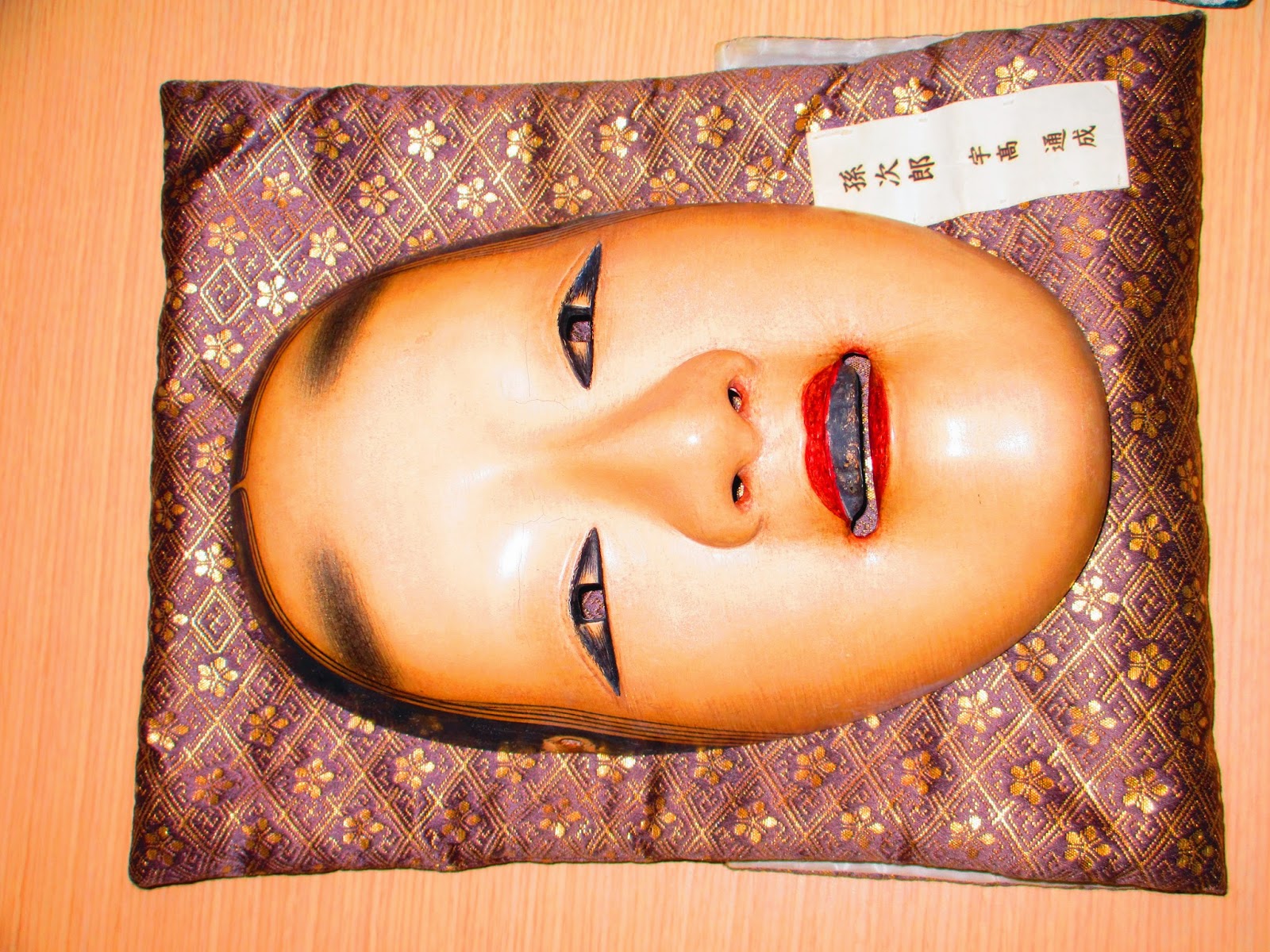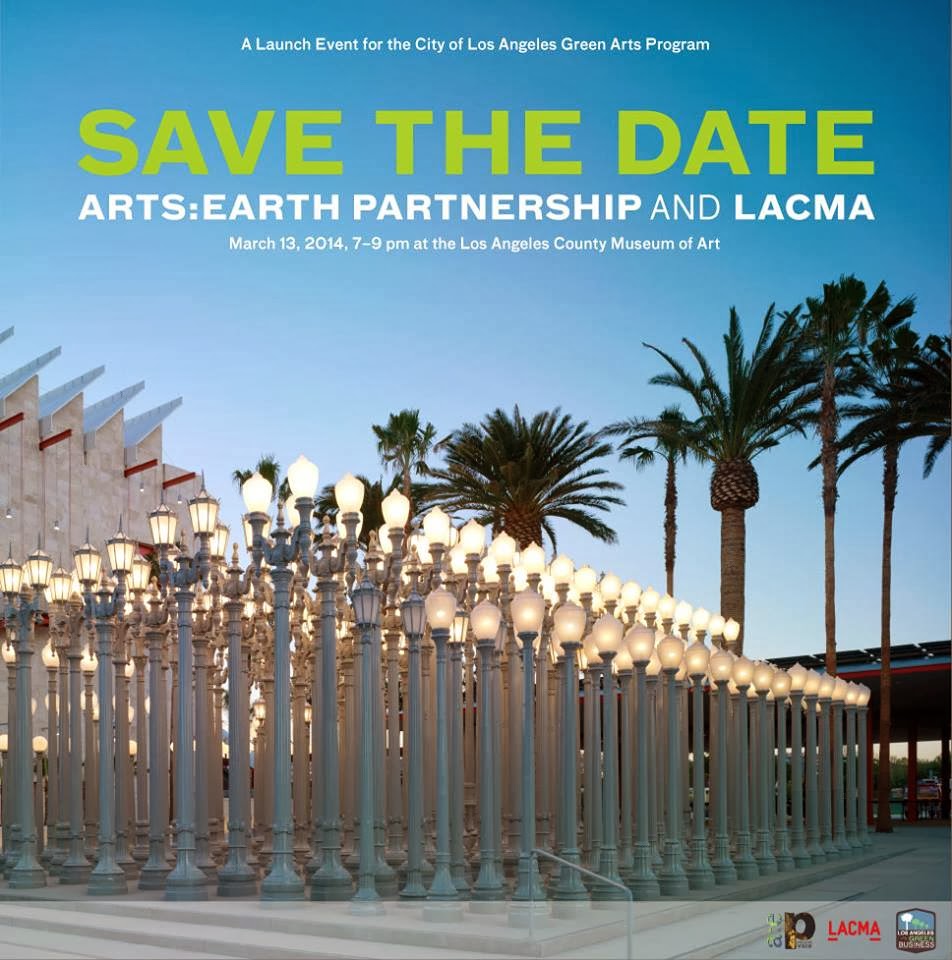Search This Blog
Monday, March 31, 2014
Friday, March 28, 2014
April 11, 2014 USC Religious Piety, Ritual, and the Performing Arts in Japan:
Religious Piety, Ritual, and the Performing Arts in Japan: Cultural Exchange with East Asia, Historically and Today
CJRC Religion and Social Life in Premodern Japan Project

| Date: | Friday, April 11, 2014 |
| Time: | 3:00 PM to 4:30 PM |
| Campus: | University Park Campus |
| Venue: | Doheny Memorial Library (DML) |
| Room: | East Asian Seminar Room (110C) |
| Email: | cjrc@dornsife.usc.edu |
Monday, March 24, 2014
Sunday, March 23, 2014
March29-April2 2014; Filmmaking workshop at Santa Monica Museum of Art
WORKSHOPS
MAR 29–APR 2, 2014iCAL
General Admission: Free
The Echo Park Film Center leads a cinematic exploration of borders in this 2-day workshop of short film making at the Santa Monica Museum of Art. Films will premiere during a public screening at the Santa Monica Main Library on April 26.
March 26th, 2014 Santa Monica Museum of Art; Drawing with Benjamin Weissman
EXHIBITION RELATED
WEDNESDAY, MAR 26, 2014
8PM–10PMiCAL
8PM–10PMiCAL
General Admission: $10
All Members: Free
All Members: Free
Artist and writer Benjamin Weissman will conduct a collaborative writing workshop and drawing ...
Friday, March 21, 2014
Norton Simon Museum - Buddha and Adorants, Coming March 28th
Norton Simon Museum
Future Exhibition
Buddha and Adorants on the Cosmic Mountain, c. 700
India: Kashmir, 675-725
Bronze with silver and copper inlay
13-1/4 x 9-1/2 x 4-3/4 in. (33.7 x 24.1 x 12.1 cm)
The Norton Simon Foundation
India: Kashmir, 675-725
Bronze with silver and copper inlay
13-1/4 x 9-1/2 x 4-3/4 in. (33.7 x 24.1 x 12.1 cm)
The Norton Simon Foundation
In the Land of Snow: Buddhist Art of the Himalayas
March 28, 2014 - August 25, 2014
Thursday, March 20, 2014
March 30, 2014. Sunday - Harari Art Collection at the Pacific Asia Museum
Focus on the Subject: The Art of the Harari Collection
- Friday, April 05, 2013
- Sunday, March 30, 2014
- Pacific Asia Museum (Pasadena, CA)
April 5, 2013 through March 30, 2014
Open Wednesday through Sunday from 10am to 6pm
Frank and Toshie Mosher Gallery of Japanese Art
The Pacific Asia Museum
46 North Los Robles Avenue,
Pasadena, California 91101
Pasadena, California 91101
The exhibition includes a full object rotation in October 2013 to accommodate a greater number of objects and protect them from extended exposure to light.
The renowned Harari Collection of Japanese Edo (1603-1868) and Meiji (1868-1912) era paintings and drawings is one of the most significant groups of works on paper at Pacific Asia Museum. Amassed in London during the 1950s and 60s by Ralph Harari, the collection includes ukiyo-e("pictures of the floating world"); important prints, paintings and sketches by Hokusai, Hiroshige and their schools; paintings by Kano, Tosa, Nanga, and Shijo schools; and decorative paintings including fans. In the 1980s, Pacific Asia Museum acquired the majority of this collection with the support of several generous donors. Objects from the collection have previously been included in the exhibitions 40 Years of Building the Pacific Asia Museum Collection in 2011 and Reflections of Beauty: Women from Japan's Floating World in 2006, among others.
Focus on the Subject: The Art of the Harari Collectionfeatures selected works from this group, and elucidates how Japanese painters and artisans shared their appreciation for subjects including landscapes, physical beauty and pursuits like poetry and tea ceremonies. These recurring themes found in the paintings are echoed in other media from the Pacific Asia Museum collection including ceramics, textiles, lacquerware and sculpture. By looking at a few of the finest examples of Harari Collection paintings alongside objects featuring similar subjects, visitors will have an opportunity to appreciate these themes from multiple perspectives, thereby deepening their knowledge of Japanese art and culture. In addition, the exhibition will examine the role of the collector both in private and public realms.
Admission
$10 general
$7 students/seniors
Free for museum members and children under 12
Admission is free every 4th Friday of the month.For more information visit www.pacificasiamuseum.org or call (626) 449-2742.
Image: Ogawa Ritsuo, Daruma Carrying a Courtesan Across a Stream,Japan, c. 1740, Ink, color, gofun on paper, Gift of Dr. and Mrs. Calvin Frazier, Pacific Asia Museum Collection, 1986.67.2
Noh Masks at CSU Long Beach 1-25-1014 to 4-13-2014
Exhibit: Traditions Transfigured: The Noh Masks of Bidou Yamaguchi
- Saturday, January 25, 2014
- Sunday, April 13, 2014
- CSU Long Beach / University Art Museum (Long Beach, CA)
Zõ-onna (Middle-Age Woman) 1998 Japanese cypress, seashell, natural pigment, urushi 8.27 x 5.31 x 2.76 inches Collection of Kelly Sutherlin McLeod and Steve McLeod © Bidou Yamaguchi | Mona Lisa, 2003 Japanese cypress, seashell, natural pigment, urushi 8.27 x 5.31 x 2.76 inches Collection of Kelly Sutherlin McLeod and Steve McLeod © Bidou Yamaguchi |
Saturday, January 25 to Sunday, April13, 2014
(The museum is closed Monday and all university holidays)
The University Art Museum
CSU Long Beach
1250 Bellflower Blvd, Long Beach, CA 90840
The human face and its expressive potential have inspired artists around the world for millennia. Arguably, Japan's Noh theater provides an unparalleled domain for exploring emotion and representing the human countenance.
Today, Noh continues to inspire a dynamic dialogue between artists from Asia and the west. Expanding on this rich vein, Traditions Transfigured selects contemporary works by Noh mask maker Bidou Yamaguchi.
These masks apply the forms, techniques, transformative spirit, and mysterious elegance of Noh masks to iconic female portraits from the European art historical canon, and to Kabuki actor prints by Sharaku, Japan's enigmatic 18th century portrait master.
The exhibition catalogue (distributed by University of Washington Press) analyzes how Bidou's work radically extends Noh's emphasis on the transformation of souls across time and space into new cultural and physical dimensions.
By transfiguring both European and Japanese artistic traditions, Bidou's work merges past and present. More importantly, it allows contemporary audiences to uncover deeper dimensions of their own humanity. By imagining ourselves wearing different faces, we can forge deeper connections with others.
Admission
$4 General public
For visiting the museum, metered parking is available at Lot 17 in the campus.
For more information, visit www.csulb.edu/org/uam call (562) 985-5761 or email uam@csulb.edu
Tuesday, March 18, 2014
Tanaka Farms Walk the Farm in Orange County California
Walk the Farm
June 14, 2014
Join us once again for our annual Walk the Farm day, where we raise money to help Japanese Farmers who lost their land and homes in the 2011 earthquake and tsunami. Walk the Farm is a day-long event where we give you the opportunity to walk the entirety of our 30-acre farm and enjoy the day with friends and family. All of the proceeds from the day will go to the aid of Japanese Farmers.
Monday, March 17, 2014
Saturday, March 15, 2014
Noh Theatre at the Japan Foundation Los Angeles - March 13, 2014
Thank you to the Japan Foundation (Los Angeles) for this fantastic program. Also to Tatsushige Udaka Sensei and Haruna Tanaka Sensei for their dedication, and for traveling all this way to share their art.
Misako Ito, Director of the Japan Foundation, gave a welcome address to Tatsushige Udaka and his wife Haruna Tanaka. Both of them are licensed Noh performers of the Kongo School, which is headed by their family. Director Ito, mentioned that she will be leaving us soon, and this might be her farewell event before she heads back to Japan, she will be missed.
Normally they only wear the mask and performance kimono during actual performance. During rehearsal and practice regular kimono is fine. We were told that in the early days, Noh was not always done in fancy attire, but even poor kimono. But the Bushi (warrior) began to donate formal attire, and the performers would wear it out of gratitude. But today, it is the norm to wear such formal wear. The masks may be used for hundreds of years; but the kimono will fade over time, so only 100 years of use is done.
He showed us masks and beautiful kimono. He spoke of the history and development of Noh. Of it's origins, it's current practice, plus with his wife Haruna Tanaka Sensei they spoke of the future too, and the future perhaps for women.
Udaka Sensei treated us to a shortened version of and entire day of Noh performances. Explaining as he did so the story and the principles behind the practice; the order of the plays chosen etc.. His Movement and Chanting simply blew me away. His daily routine of doing Noh plays shows up in his ability to draw us into the play with only his voice, movement, and a fan.
I've been to many programs on Japanese Culture and Arts. This is by far one of the best I've ever attended.

http://www.noh-udaka.com/en/index.html
http://www.jflalc.org/
Misako Ito, Director of the Japan Foundation, gave a welcome address to Tatsushige Udaka and his wife Haruna Tanaka. Both of them are licensed Noh performers of the Kongo School, which is headed by their family. Director Ito, mentioned that she will be leaving us soon, and this might be her farewell event before she heads back to Japan, she will be missed.
Maybe I shouldn't say, but one of my favorite parts was that each time some great praise would be placed on Udaka Sensei he would actually blush. Perhaps he's used to have a mask over his face. Though he did say that sometimes if he played a young warrior in a performance he might not wear a mask.
Normally they only wear the mask and performance kimono during actual performance. During rehearsal and practice regular kimono is fine. We were told that in the early days, Noh was not always done in fancy attire, but even poor kimono. But the Bushi (warrior) began to donate formal attire, and the performers would wear it out of gratitude. But today, it is the norm to wear such formal wear. The masks may be used for hundreds of years; but the kimono will fade over time, so only 100 years of use is done.
He showed us masks and beautiful kimono. He spoke of the history and development of Noh. Of it's origins, it's current practice, plus with his wife Haruna Tanaka Sensei they spoke of the future too, and the future perhaps for women.
Udaka Sensei treated us to a shortened version of and entire day of Noh performances. Explaining as he did so the story and the principles behind the practice; the order of the plays chosen etc.. His Movement and Chanting simply blew me away. His daily routine of doing Noh plays shows up in his ability to draw us into the play with only his voice, movement, and a fan.
I've been to many programs on Japanese Culture and Arts. This is by far one of the best I've ever attended.
https://www.youtube.com/watch?v=FuKPVnAT-gQ
This is a youtube video I found of Udaka Sensei Performing. Not the same event we attended here, but same Sensei.
This is a youtube video I found of Udaka Sensei Performing. Not the same event we attended here, but same Sensei.
Tatsushige Udaka in the Noh play 'Sesshoseki', 2002
http://www.noh-udaka.com/en/index.html
http://www.jflalc.org/
Friday, March 14, 2014
Wednesday, March 12, 2014
Tuesday, March 11, 2014
Monday, March 10, 2014
This past weekend the Takeda Family organized a host of volunteers and over 100 participants for their Akabeko Project. We came later in the afternoon, so many had already finished painting their Akabeko, But the Center (PJCI - Pasadena Japanese Cultural Institute), where the event was held, was still quite lively.
The Akabeko Project was organized to create a fun and educational event at the PJCI for the community.
By participating and donating funds were raised for Ohana Ouenjya.
According to the post card handed out to participants:
"Ohana Ouenjya is a non-profit organization supporting children with mental, physical, and developmental disabilities. They provide early child developmental support for children ages 2 - 5 years old with known or suspected disabilities. In addition, the organization provides developmental support, after school service, and transportation for youth ages 6 - 18 years old. Due to the limited capacity within the adult facilities, greater numbers of high school graduates are joining their organization.
Ohana Ouenjya is located in Motomiya city, the center of Fukushima Prefecture. They provide services to some children who were affected by the nuclear disaster. Because of their home's proximity to the power plant, their hometowns are now categorized as evacuation zones. They were forced to evacuate from their hometowns and live in new places they are not familiar with including temporary housing, rented homes, or with family and friends.
Many parents worry about radiation, therefore limit the amount of time their children can play outside. The children cannot enjoy the outdoors as they used to, as they are not allowed to play in parks, playgrounds, pools, the river, and other areas.
Yachiyo, Amy, and I each painted one of our own; though I didn't get a picture of Amy's, here's what Yachiyo and I came up with. enjoy.
http://akabekoproject.wix.com/akabekoproject#!event-details/c1nzq
The Akabeko Project was organized to create a fun and educational event at the PJCI for the community.
By participating and donating funds were raised for Ohana Ouenjya.
According to the post card handed out to participants:
"Ohana Ouenjya is a non-profit organization supporting children with mental, physical, and developmental disabilities. They provide early child developmental support for children ages 2 - 5 years old with known or suspected disabilities. In addition, the organization provides developmental support, after school service, and transportation for youth ages 6 - 18 years old. Due to the limited capacity within the adult facilities, greater numbers of high school graduates are joining their organization.
Ohana Ouenjya is located in Motomiya city, the center of Fukushima Prefecture. They provide services to some children who were affected by the nuclear disaster. Because of their home's proximity to the power plant, their hometowns are now categorized as evacuation zones. They were forced to evacuate from their hometowns and live in new places they are not familiar with including temporary housing, rented homes, or with family and friends.
Many parents worry about radiation, therefore limit the amount of time their children can play outside. The children cannot enjoy the outdoors as they used to, as they are not allowed to play in parks, playgrounds, pools, the river, and other areas.
Yachiyo, Amy, and I each painted one of our own; though I didn't get a picture of Amy's, here's what Yachiyo and I came up with. enjoy.
http://akabekoproject.wix.com/akabekoproject#!event-details/c1nzq
Subscribe to:
Comments (Atom)

